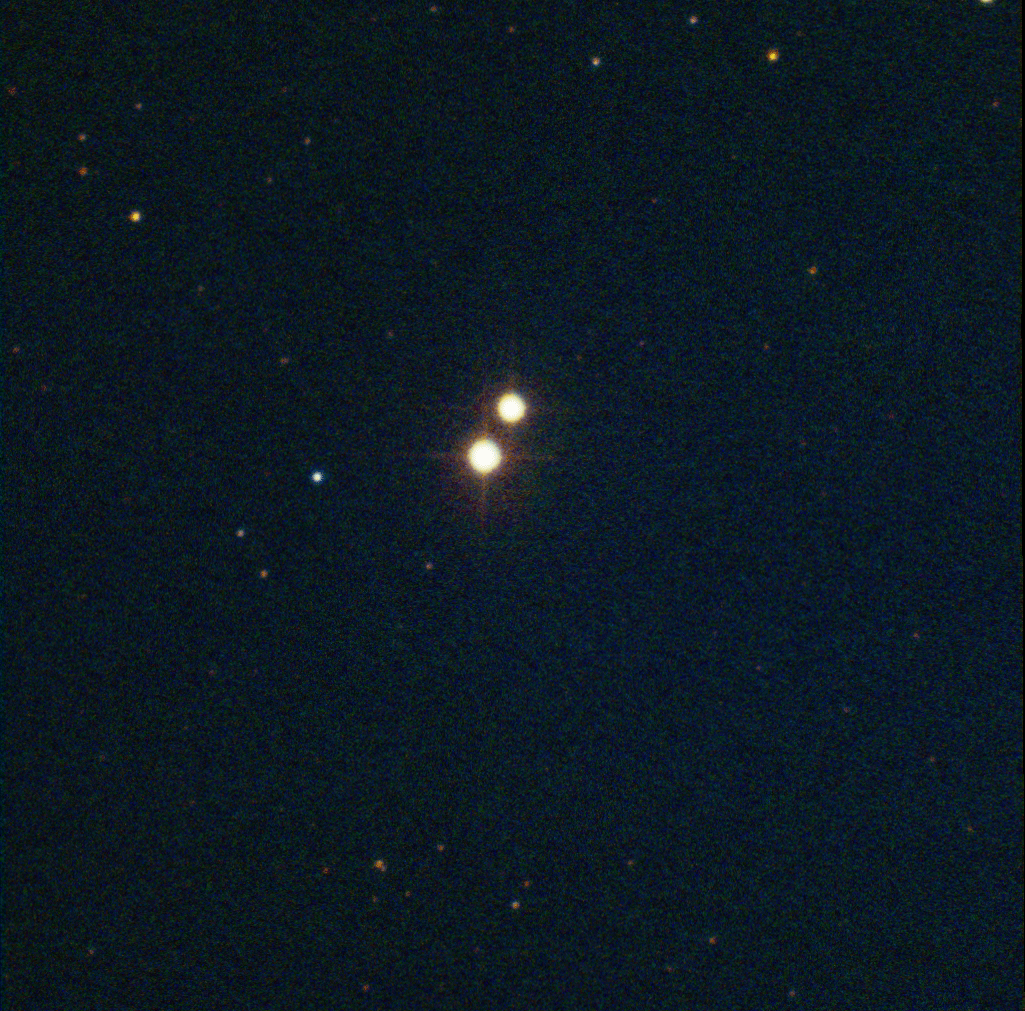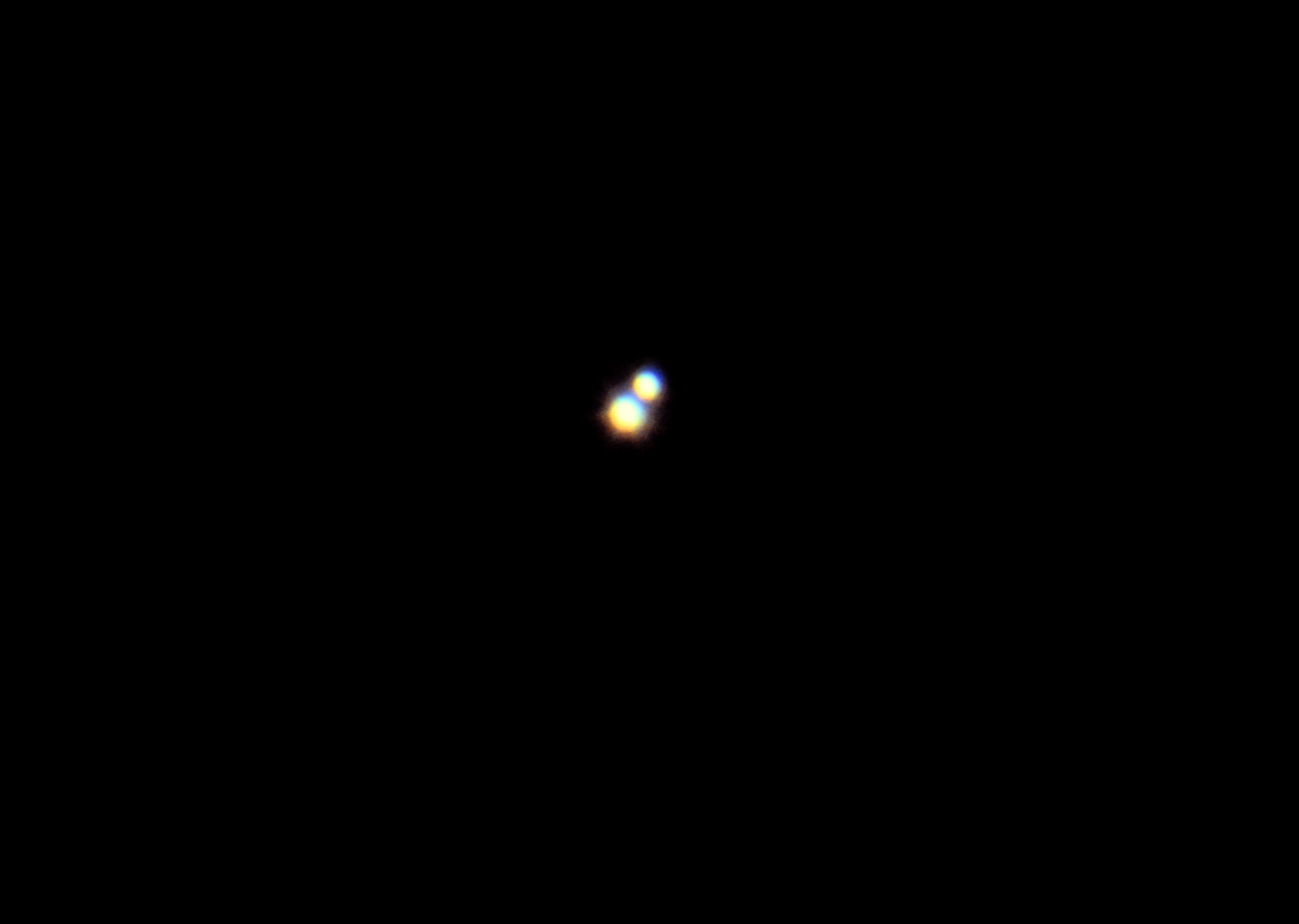
0.5 second exposure, Kodak Kodachrome 100 slide film.
5" f/5 refractor plus 6mm eyepiece.
For some reason double stars have never been of any reat interest to me. I have enjoyed observing some of them over the years, however I have only ever bothered to try and photograph 2 of them, alpha centauri and Alberio. The reason I obtained these photographs was for lecture purposes.
Alpha Centauri holds many claims to fame. It is the nearest star system to the Sun. It is the third brightest star in the sky; and it is a beautiful double star. In fact, alpha centauri has to be one of the best double stars in the sky for small to medium telescopes. In an 8" it looks very much like a pair of car headlights heading towards the observer. It is also a very useful object for public sky shows. The first reaction of most people is puzzlement at why the telescope shows the two pointers so close, when to the naked eye they are far apart. After some explanation they realise that they are looking at what to their eye is a single star. They are then usually quite impressed!

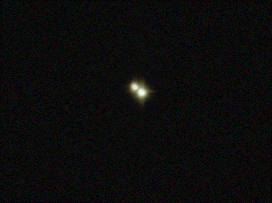
Alberio is a favourite of double star observers as it shows a fine colour contrast. The brighter star is a deep yellow while the companion is bluish. I frequently use it during public nights to show people that it is possible to see colour in the sky and to lead into a discussion about star colours and temperatures.
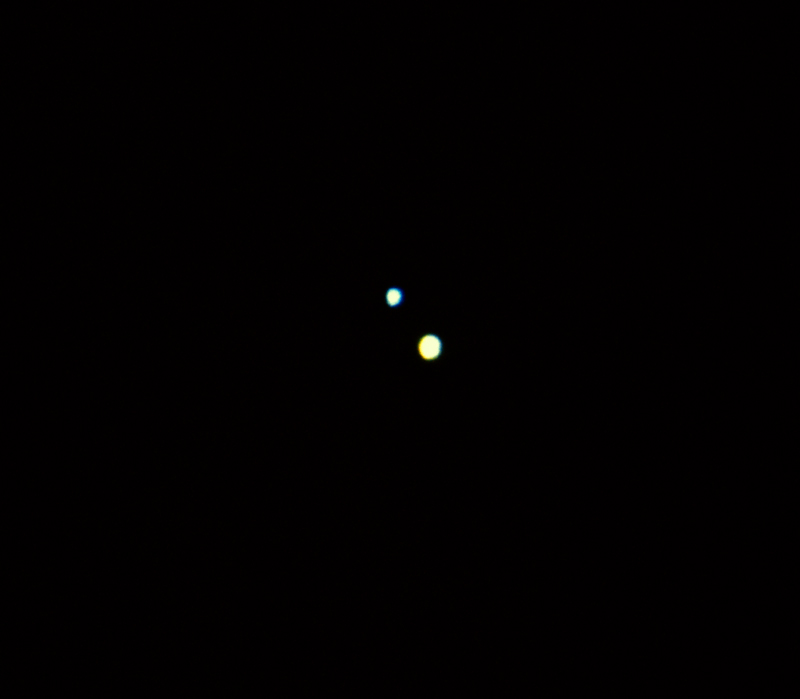
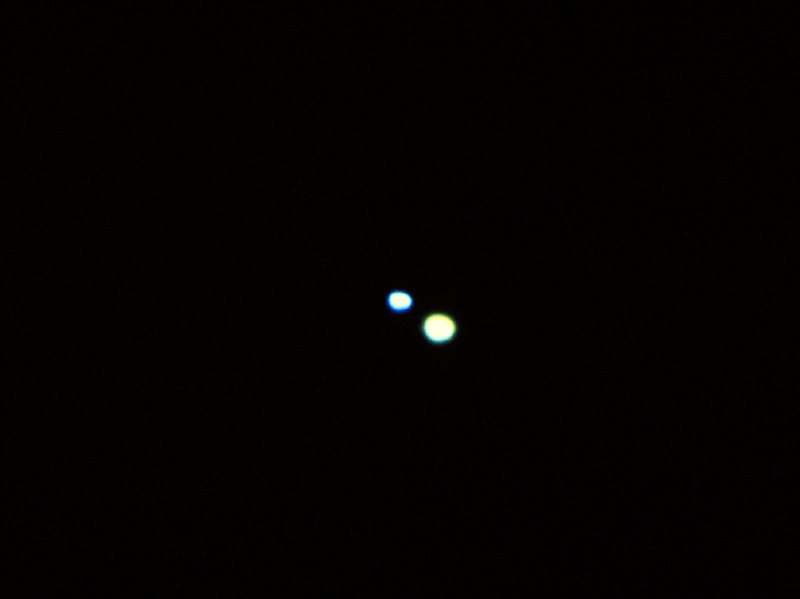
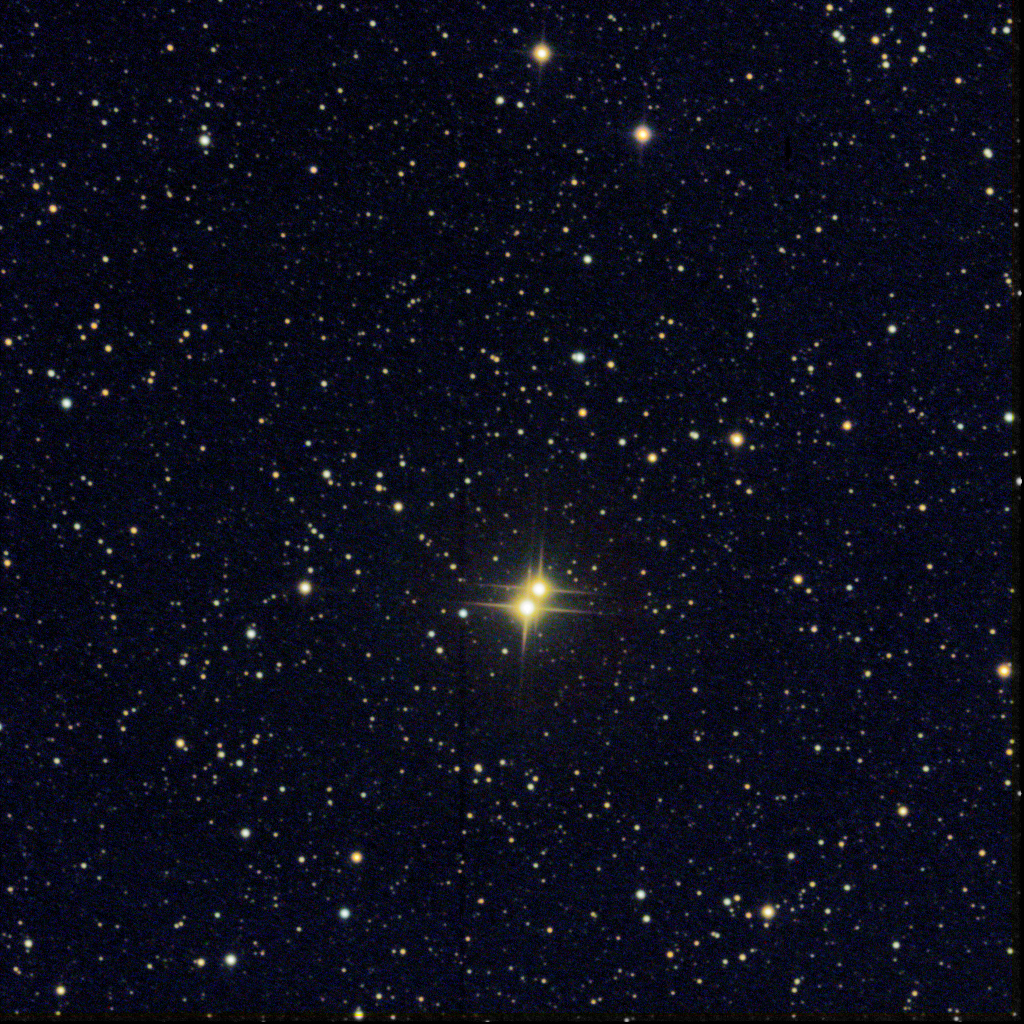
In an attempt to prepare a student lab on parallax, I imaged 61 cygni twice, 6 months apart. The idea was to see if the parallax could be measured and from there its distance. Unfortunately, as it turned out, the proper motion made the exercise too difficult for intro astronomy students so I abandoned the exercise. Below are the two sets of images superimposed. The motion of 61 cygni is easily seen.
